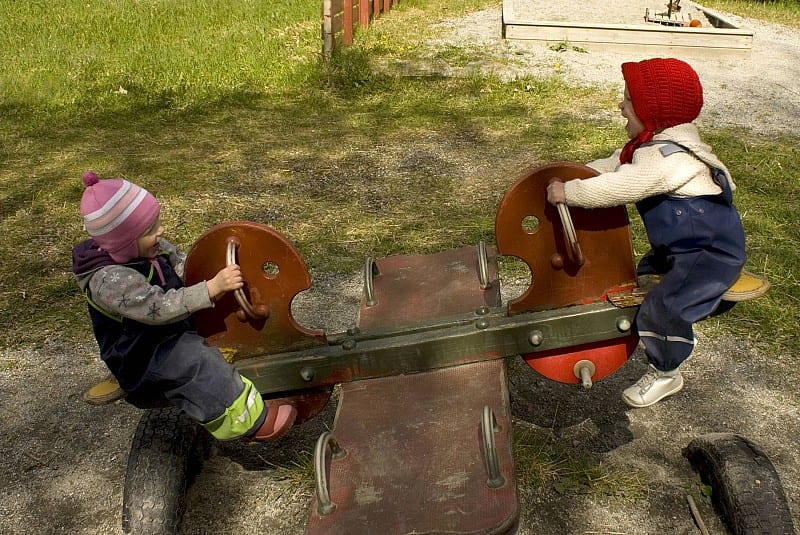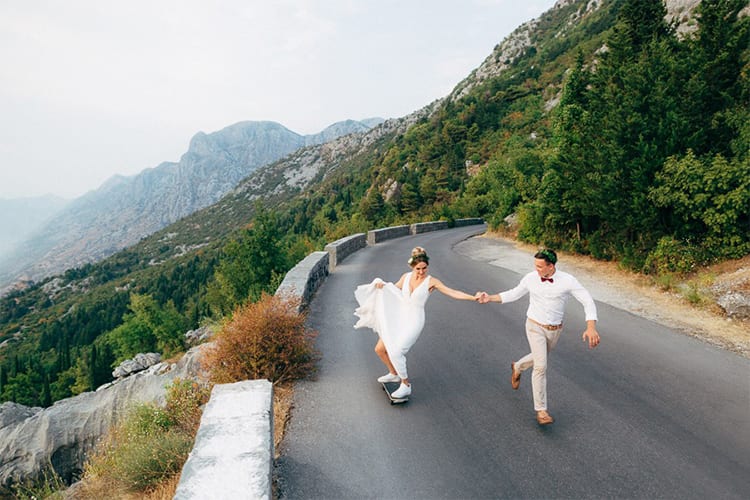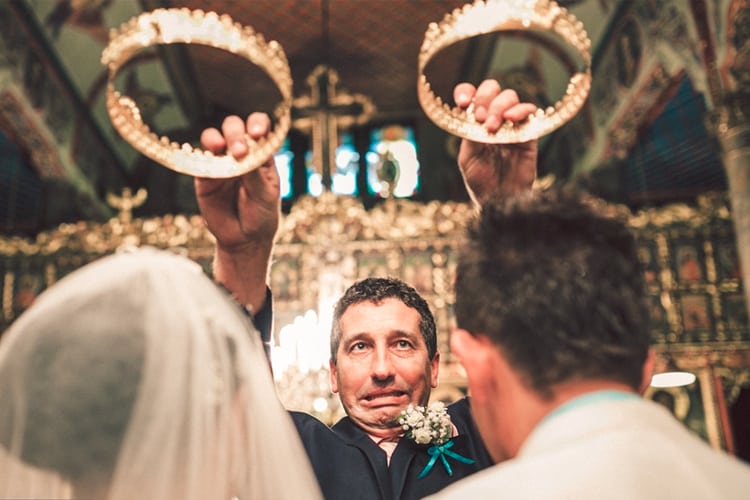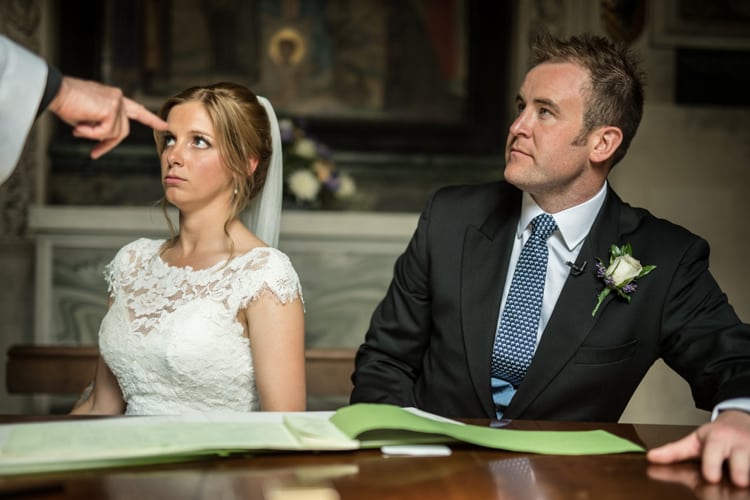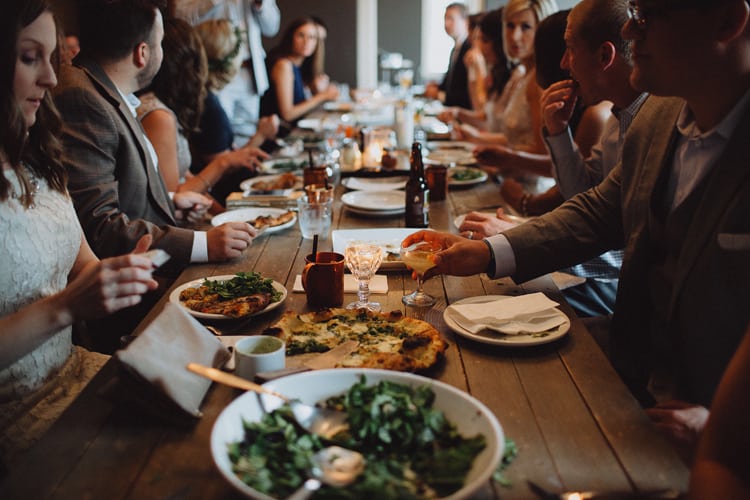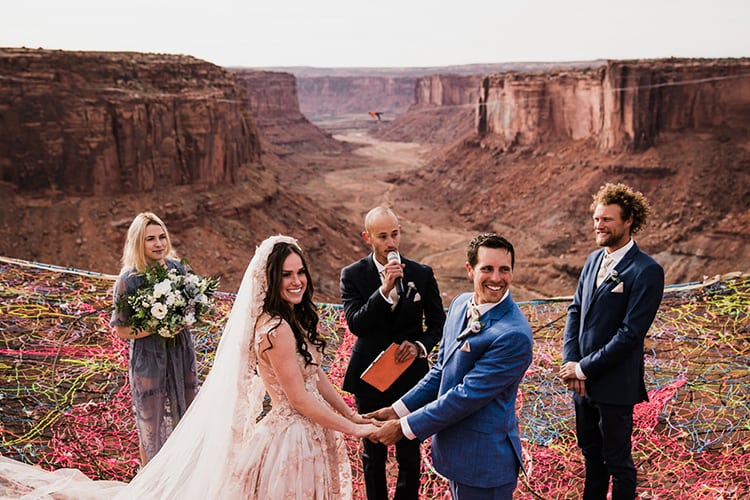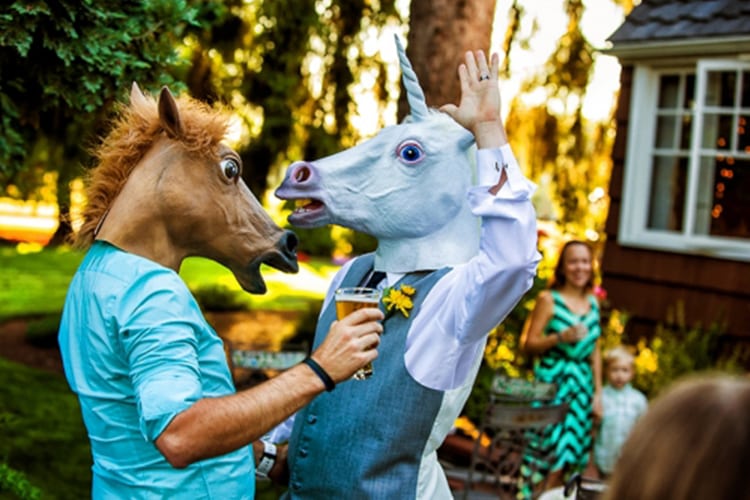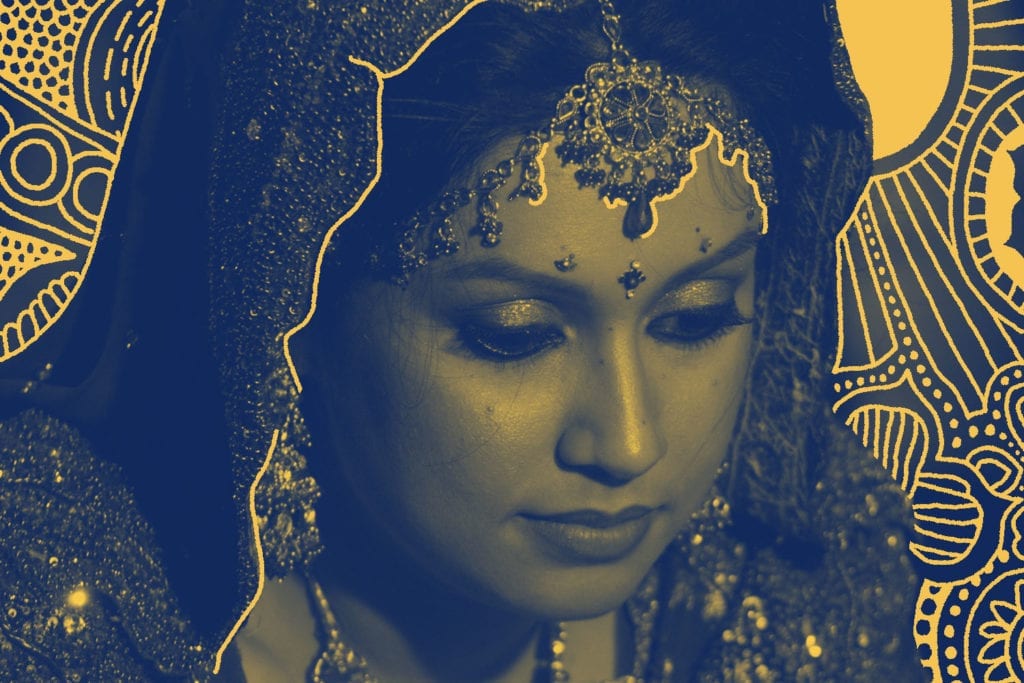
When it comes to elaborate traditions, bold colors, and vibrant dances, there are few events that can top an Indian wedding. But for someone who’s never been invited to this kind of ceremony—or whose entire grasp of Indian culture is limited to a few YouTube clips from Bollywood musicals—the prospect can feel overwhelming. Aren’t Indian weddings full of rituals, elaborate dress codes, and synchronized dance numbers?
Luckily, no one is asking you to do a Bollywood routine (that’s like thinking you can’t go to a Jewish wedding unless you know how to do the Bottle Dance from Fiddler On The Roof.)
But Indian wedding traditions are significantly different from Western ones, and if you don’t prepare, you may feel like you’re diving into what is typically a three-day event with your eyes blindfolded and your shoelaces tied together.
Don’t worry. We’ve got you covered. We spoke to Sonal J. Shah (Sonal J. Shah Event Consultants), who’s been planning Indian weddings for over 15 years, to get you all the information you need before pulling on a flashy kurta and getting down to Shah Rukh Khan on the dance floor.
Cultures Abound: Hindu vs Punjabi vs Rajasthani and more
First thing’s first: It’s important to make an effort to educate yourself about Indian culture before potentially embarrassing yourself with an uninformed comment. For instance, using “Indian wedding” and “Hindu wedding” interchangeably. While Hinduism is the largest religion in India, it’s far from the only one. Not all Indians are Hindu, and not all Hindus have traditional Hindu weddings. India is the seventh-largest country in the world, and each region has its own distinct cultural practices and wedding traditions.
“Indian weddings can look very different depending on the background and culture of the bride, groom, and their families,” Shah said. “There are Punjabi weddings, Rajasthani weddings, Gujarati weddings, and South Indian weddings, and they all have different traditions.”
The type of Indian wedding you’re attending generally depends on where the bride and groom’s families are from. If you’re not sure of this information, now is a great time to ask. Attending a cultural celebration as rich as an Indian wedding is a perfect opportunity to learn more about a close friends’ background and traditions.
What Should You Wear?
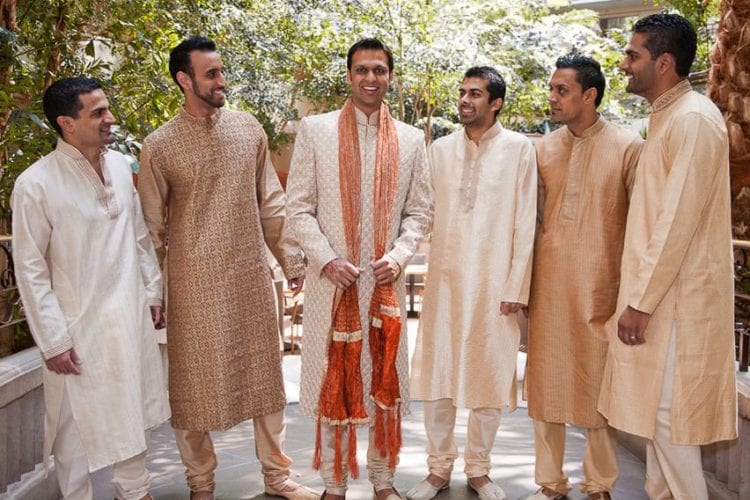
Male guests are not limited to the midnight blue or black of the western wedding tradition. An Indian wedding is a perfect opportunity to experiment with traditional Indian wedding colors, like that eye-catching green or golden yellow you’ve always been afraid to try. According to Shah, the brighter the better.
“Traditionally, you would never wear something black or white,” Shah said. “You want to wear something colorful.”
You may be wondering if it’s expected (or appropriate) for you to wear traditional Indian wedding attire on the big day. While it may not be mandatory (though it’s always best to ask the hosts), it’s usually welcome. In fact, it’s an excellent way to show the bride and groom just how interested you are in learning about their culture and how willing you are to immerse yourself in it throughout the ceremony.
Since an Indian wedding can include many different events that unfold over a number of days, you’ll get to rock quite a few different types of outfits. Here’s a brief run-down of what you can expect to deck yourself out in.
Dressing for the Pre-Wedding Events
For smaller events that occur before the wedding, the suggested attire is a kurta, which is a loose, collarless shirt that generally falls right above the knees and includes buttons from the waist right up to the neck. There’s no shortage of styles or colors to choose from here, so feel free to have fun picking a design that really catches the eye!
Kurtas are worn over churidars, which are stretchy but tight-fitting pants that you can usually buy in a set that matches with your kurta.
Dressing for the Reception
You can stick close to your comfort zone for this one, according to Shah, because a tuxedo or suit is completely acceptable here. But the color rule still applies. Find a tie or pocket square that really pops. Again, it’s best to clarify with your host what’s expected for the event. No one wants to stand out like Justin Trudeau did on his recent visit to India.
Dressing for the Wedding
This is where things get fancy. Shah suggests a nice sherwani to wear to the big event, which is a knee-length coat that buttons up to the neck and, much like the kurta, can be found in a variety of elegant and classy designs. Between all of the bright gold and deep red and dark blue varieties the internet has to offer, you’ll be sure to look like a maharaja.
Right now you may be asking yourself: exactly how many outfits do I need to buy for this wedding? While the bride and groom may be committing to each other for the rest of their lives, the same doesn’t have to be said for you and your fancy new wedding clothes. Shah notes that there are a number of websites that will allow you to rent traditional Indian wear for the week. And while renting all of these outfits can still end up costing a pretty penny, can you really put a price on looking good and showing your hosts just how committed you are to being a part of their special day? (That was a rhetorical question.)
What Happens at an Indian Wedding?
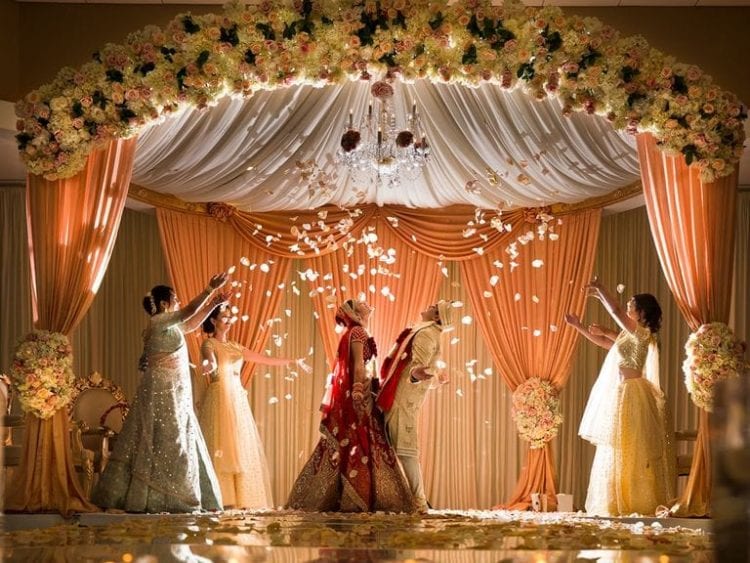
As Shah mentioned, Indian weddings will look depending on the bride and groom’s culture, but there are a few Indian wedding customs that are quite common. For starters, weddings typically last 2-3 days, with different events on each day.
Here a few that you might expect to see. Keep in mind that all of these events are meant to bring the family and friends of the couple together, so get ready to mix and mingle.
The Mehndi Ceremony: It’s Henna Time
You may have seen mehndi before, but you probably know it by another name: henna. It’s the thin, brown, intricate designs that are often drawn on the back of a woman’s hands and sometimes on her feet, and it’s been a part of many Indian pre-wedding ceremonies since the 15th century. During this event, the bride and her female family and friends have mehndi drawn all over their hands and feet (with the bride getting the most elaborate design) while guests walk around to mingle and admire each other’s artwork. While men typically don’t have designs drawn on themselves, it’s acceptable to have a small design on your hand if you want to be part of the celebration.
The Sangeet: Music and Dance
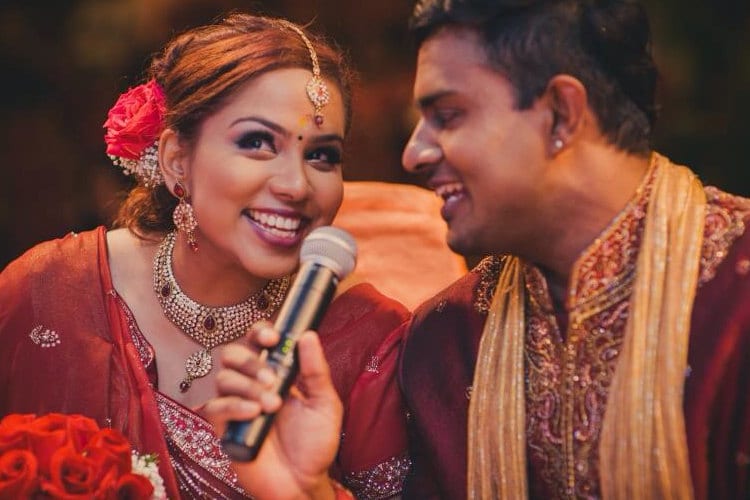
Typically held on the second night of festivities, this is as close to a Bollywood movie as you can get. Sangeet means “sung together” in Sanskrit, so this event is basically a big musical party that brings both families together through music and dance. Relatives and friends of both the bride and groom choreograph dance numbers to perform one-by-one for the enjoyment of the guests. Get prepared, because your friend might ask you to be in the number.
The event culminates in an open dance floor that everyone is invited to join. Shah’s pro tip: Don’t forget to take off your shoes! The dance floor is no place for your loafers, and there will always be a safe space to keep them near the edge of the dance floor.
The Baraat: For Grooms
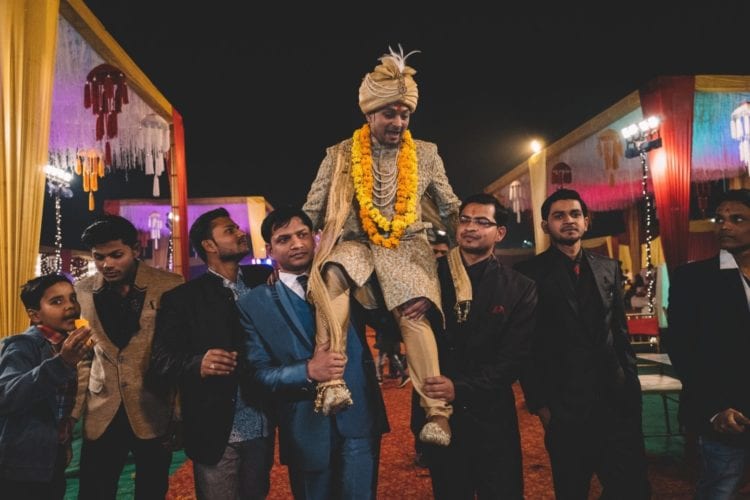
The baraat is the groom’s wedding procession, and while that may sound quite ordinary, it’s anything but. The groom in the baraat travels to the wedding venue while carrying a sword and riding on a majestic white horse, followed by a band and dancers. For this event, feel free to join in the procession, enjoying the sound of the drums and dancing along as often as possible.
There are countless other Indian wedding traditions. For example, if the couple is Hindu, there might be a Ganesh Poojan, which is an invocation to Lord Ganesh, or a Hastamilap, which is the joining of the bride and groom’s hands. But it’s important to realize that you don’t have to participate in everything.
“There are many traditions that you don’t necessarily need to follow; really, you won’t be able to,” Shah said. “But you should always be mindful and respectful of them.”
The golden rule here: don’t feel like you have to participate in events that hold religious significance or that you simply won’t be able to understand, but do be respectful. Also, don’t try to play it cool: if you’re ever uncertain of what to do, just ask.
Indian Wedding Etiquette
Basic rules of etiquette can get you a long way. We asked Shah about the do’s and don’ts that will be sure to wrap up any lingering questions you may still have.
Do: Have a Lot of Fun
It’s important to cast your anxieties aside and really embrace all of the traditions you’re invited to be a part of. So sing, dance, make friends, and be as colorful as your outfit.
Don’t: Get Drunk
Getting wasted at American weddings is almost a tradition in and of itself: expected, if not exactly encouraged. But according to Shah, it’s a no-go at Indian weddings. Nurse your drinks and know your limits. No one wants to be the obnoxious American who passes out on the dance floor.
Do: Mix and Mingle
This is no time to be shy. According to Fortune, the average Indian wedding in the U.S. has 500 guests. Get to know your friend’s cousin’s brother’s aunt, and any of the other distant relatives that are bound to be at the ceremony.
Don’t: Be Standoffish
Not unique to Indian weddings, or weddings as a whole.
Do: Give Cash Money
Most Indian wedding invites will specify, “No boxed gifts,” but that just means they prefer cash or checks. Word to the wise: It’s traditional to give in denominations of 1, as the extra $1 is seen as an additional blessing. So if you’re writing out a check to the happy couple, be sure to make it out for $51, $101, or even $510. We know you blew all that money on your fancy new wedding outfits, but hey, it’s the biggest day of your friend’s life after all.
Attending your friend’s Indian wedding ceremony is a great opportunity to learn more about their culture. So push your uncertainties aside, pull on your kurta, and jump out onto the dance floor—shoes off, of course.








